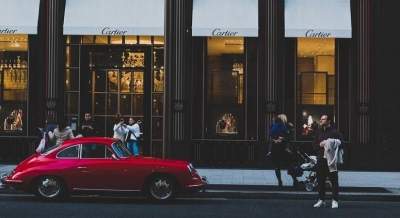New Delhi (IANSlife) The luxury industry is often defined by opulent and elite consumption habits. People in emerging markets, however, are changing their buying habits, and this has implications for the luxury market. In todays world, more people have access to information than ever before and they somewhere become non-rational consumers. This means that consumers these days have a high influence by social media, social influencers, celebrities, or some other direct or indirect promotions of the products or services making an individual a non-rational consumer.
A non-rational consumer will always act without any reason or logic in its purchasing behaviour including financial interest. As per several pieces of research, it is visible that younger generations (i.e. Gen Z) are more exposed to such topics and they are more tend to end up buying more luxury consumables. These audiences had to be born between 1997 to 2003. A large chunk of this gen use to treat themselves with luxury goods & also often seen to gift to others. As a result, there is now a general distrust of luxury companies among millennials and these attitudes will continue to reshape how consumers view brands moving forward. This article highlights trends in the Indian luxury market and how they will shape the future of consumption in this sector.
The Indian luxury market is expected to grow by 10 per cent over the next five years. In the last couple of years, only the Indian luxury market has performed better than someone had expected. During the pandemic time, India was witnessing very easy, slow & sustainable growth. It is also projected that the Indian luxury sector to surpass $200 billion by 2030. As per Statista, in 2021 Indian luxury goods market amounted to $5.94 billion and expected growth of 8.03 per cent annually. This will make it the only major 1st tier region in the country like Delhi, Mumbai, Bengaluru, Hyderabad, etc. where luxury sales are highest & also reaching the other small regions gradually. As a result, there is great potential for luxury brands.
Several reasons can be stated behind this expansion:
One is that India is one of the biggest developing nations in the entire world & factors include Policy reforms, economic development, Internet penetration, and India’s several growing populations majorly growth of the middle class.
Another is that wealthy Indians are becoming more brand-loyal. And lastly, more luxury companies are investing in the Indian market.
And one reason for this is that more Indians will be able to afford luxury goods. While luxury brands like Louis Vuitton and Gucci once catered to the top 1 per cent of Indians, they are now increasingly aiming to attract a wider audience. Companies like LV are producing cheaper lines, like their “Tote” bag, which costs around $500. What’s more, they are partnering with local textile manufacturers to make their products even more affordable. This is because luxury brands are now aware that the future of the industry lies in expanding their customer base.
Another major trend in the Indian luxury market is the rise of online platforms for selling and buying luxury goods. Furthermore, this is expected to grow in the future as India is one of the fastest-growing online markets in the world. India’s e-commerce market is expected to reach $70 billion by 2021. Consumers are also embracing online shopping in a big way, particularly urban millennials. In 2017, online sales in India were worth $30 billion. This can double by 2023.
In 2022 and beyond, we have to leave the traditional way of marketing luxury products. The luxury market is volatile and fragmented. Consumers have dynamic habits of spending. Consumers spend to buy luxury consumables for numerous reasons; majorly all of them are linked to the strong emotions derived that we used to attach to the purchase of precious material. Whether or not a buyer is inappropriate financial stability that permits them to be capable to buy expensive items, they may pick to purchase it anyhow to achieve a certain feeling& the more they used to feel this sense of achievement or satisfaction in buying the luxury consumables it always results in the positive note for the brands.
Brands are also very much aware of the psychological behaviour of their potential customers. As per the data, several brands use psychological techniques to make sure their consumers also get themselves the same amount of satisfaction & pride with the purchase of such products & services. With the growth in the income of people & the increase in the market over the following 10 years, the portion is very much ready to see positive development through the monetary turn of events, more noteworthy connectedness, and strategy changes, all of which will offer plenty of chances for extravagance organisations to serve youthful, prosperous, associated, and certain Indian purchasers.

